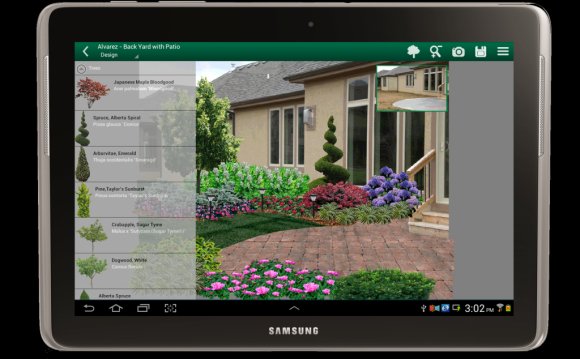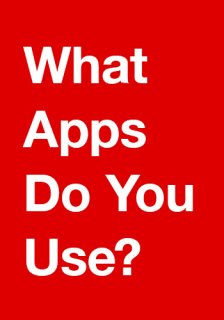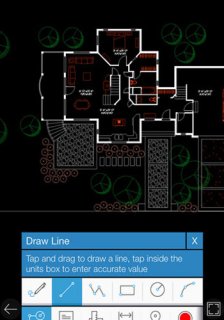
 In order to better understand what smartphone apps landscape architects use to conceptualize, design, and construct projects, ASLA recently surveyed practicing landscape architects, students, and university faculty from around the world and received more than 150 responses. In part two of this three part series, we continue to summarize the results of the survey, focusing on useful apps for constructing landscapes and presenting design ideas to colleagues and clients.
In order to better understand what smartphone apps landscape architects use to conceptualize, design, and construct projects, ASLA recently surveyed practicing landscape architects, students, and university faculty from around the world and received more than 150 responses. In part two of this three part series, we continue to summarize the results of the survey, focusing on useful apps for constructing landscapes and presenting design ideas to colleagues and clients.
What Apps Do You Use When Constructing a Project?
Nearly 50 percent of respondents use a smartphone app during the construction process for all or most projects, while 40 percent of respondents said they never or rarely use an app for this phase of a landscape project. 67 percent said they discovered the app on their own, while 18 percent said their firm encouraged them to use it. 7 percent were encourage to use it by a construction or engineering firm and others were informed about these apps through web searches.
The most popular apps for construction identified by respondents:
1. AutoCAD 360 (free; ios / android): AutoCAD 360 is a drawing and drafting app that allows you to view, edit, and share AutoCAD drawings. You can upload and open 2D and 3D DWG drawings from email and view all aspects of the file during the construction process. You can also draw and edit shapes, as well as move, rotate, and scale objects just as you would in the desktop version of AutoCAD.
2. Newforma Plans (free ios): Newformas Plans is an app that eliminates the need to carry paper plans around a jobsite. This app allows you to upload current project plans to the NewForma desktop platform and access them automatically through your iPad. You can then view, markup, and email documents while in the field.
Some other interesting apps respondents suggested:
PlanGrid (free; ios / android): PlanGrid is a construction app that allows users to upload PDF drawings to plangrid.com and then sync to their smartphones and tablets. Users can then markup and annotate drawings from the field, as well as take progress photos and pin them to the construction documents. Any markups and annotations made in the app can be shared with everyone who has access to the documents.
 Bluebeam Revu (.99 ios): Bluebeam Revu is another app that lets you access and markup PDFs on the go. The app allows you to add comments, images, symbols, and multimedia as markups that can be saved as custom markups for future reuse. In addition to these markup features, the app has a feature that allows you to verify length, area, perimeter, and other measurements in a blueprint. Using a cloud-based platform, Revu also allows you to collaborate with colleagues in real time on the same document.
Bluebeam Revu (.99 ios): Bluebeam Revu is another app that lets you access and markup PDFs on the go. The app allows you to add comments, images, symbols, and multimedia as markups that can be saved as custom markups for future reuse. In addition to these markup features, the app has a feature that allows you to verify length, area, perimeter, and other measurements in a blueprint. Using a cloud-based platform, Revu also allows you to collaborate with colleagues in real time on the same document.
Theodolite (.99 ios): Theodolite is a viewfinding app that uses your smartphone’s camera, compass, and GPS to create geo-tagged photos, screenshots, and movies with one app. Not only can you stamp geographical data and notes directly onto photos and movies for later reference but you can also view your location on a map and share your position with your team through a “team tracking” feature.
What Apps Do You Use When Presenting a Project?
Some 52 percent of respondents said they use a smartphone app for presenting all or most projects, while 28 percent of respondents said they never or rarely do. 66 percent said they discovered the app on their own, while 22 percent said their firm encouraged them to use it.
The most popular apps for presentation identified by respondents:
1. Dropbox (free; ios / android): The Dropbox app allows you to store your photos, documents, videos, and other files to the cloud or send large files that might not send via email directly to others. With this app, you can create and edit Microsoft Office documents from your smartphone or tablet, or even back up photos and videos to the cloud automatically.
2. Keynote ($9.99 ios): Keynote allows users to create presentations with animated charts and transitions on their iPod or iPad. Presentations can be built from 30 Apple-designed themes and slide layouts, animations, fonts, and style options to make presentations more dynamic.
3. Adobe Acrobat Reader (free; ios): Adobe Acrobat Reader is the smartphone version of the popular desktop application, with many of the same features. The app allows you to quickly open PDF documents from email or the web and make comments on PDFs using sticky notes and drawing tools. You can also quickly fill out forms by typing text into fillable field or e-sign documents with your finger.
4. Microsoft PowerPoint (free; ios / android): The Microsoft PowerPoint app has the familiar look and feel of the desktop version of PowerPoint and allows you to create, view, and edit presentations from your smartphone or tablet. When you edit a presentation on an app, the content and formatting remain the same across all of your devices and you can work with other simultaneously on the same presentation from different platforms.
uPad 3 ($5.99 ios): uPad turns your smartphone or tablet into a handwritten note-taking device. The app will only recognize a special touch pen, eliminating the chance that your hand or fingers will interfere with writing. uPad allows you to annotate PDF files and presentations quickly and easily and share annotated documents with any application that can read an image of PDF.
iAnnotate ($9.99 ios; free android): The iAnnotate app is a popular app for reading, marking up, and sharing PDFs, Word Documents, PowerPoint Documents, and image files. Users can choose from a variety of tools to annotate documents such as a pen, highlighter, typewriters, stamp, and many more. Users can also add, delete, and rearrange pages in documents, then compress annotations to prevent modification.
YOU MIGHT ALSO LIKE












